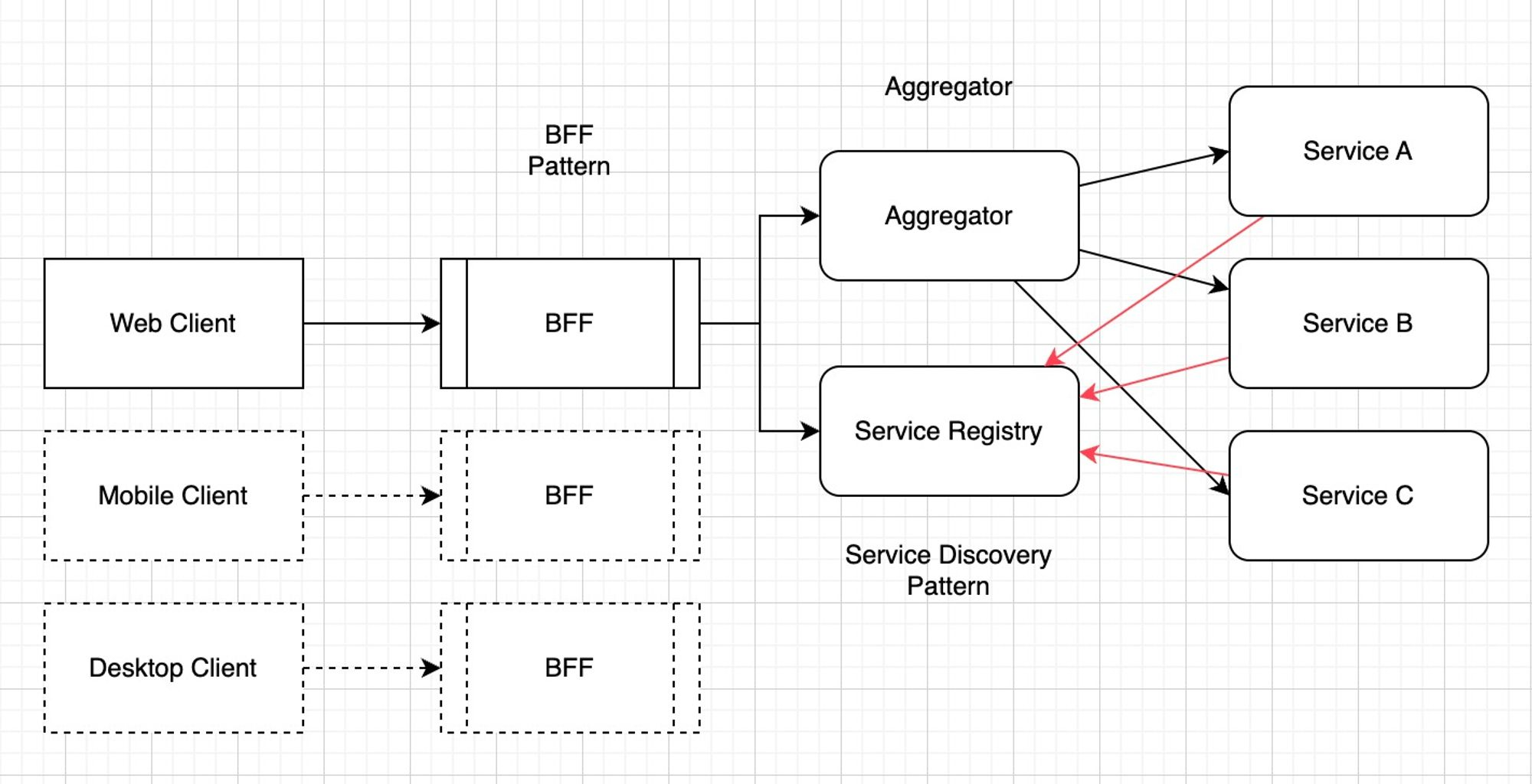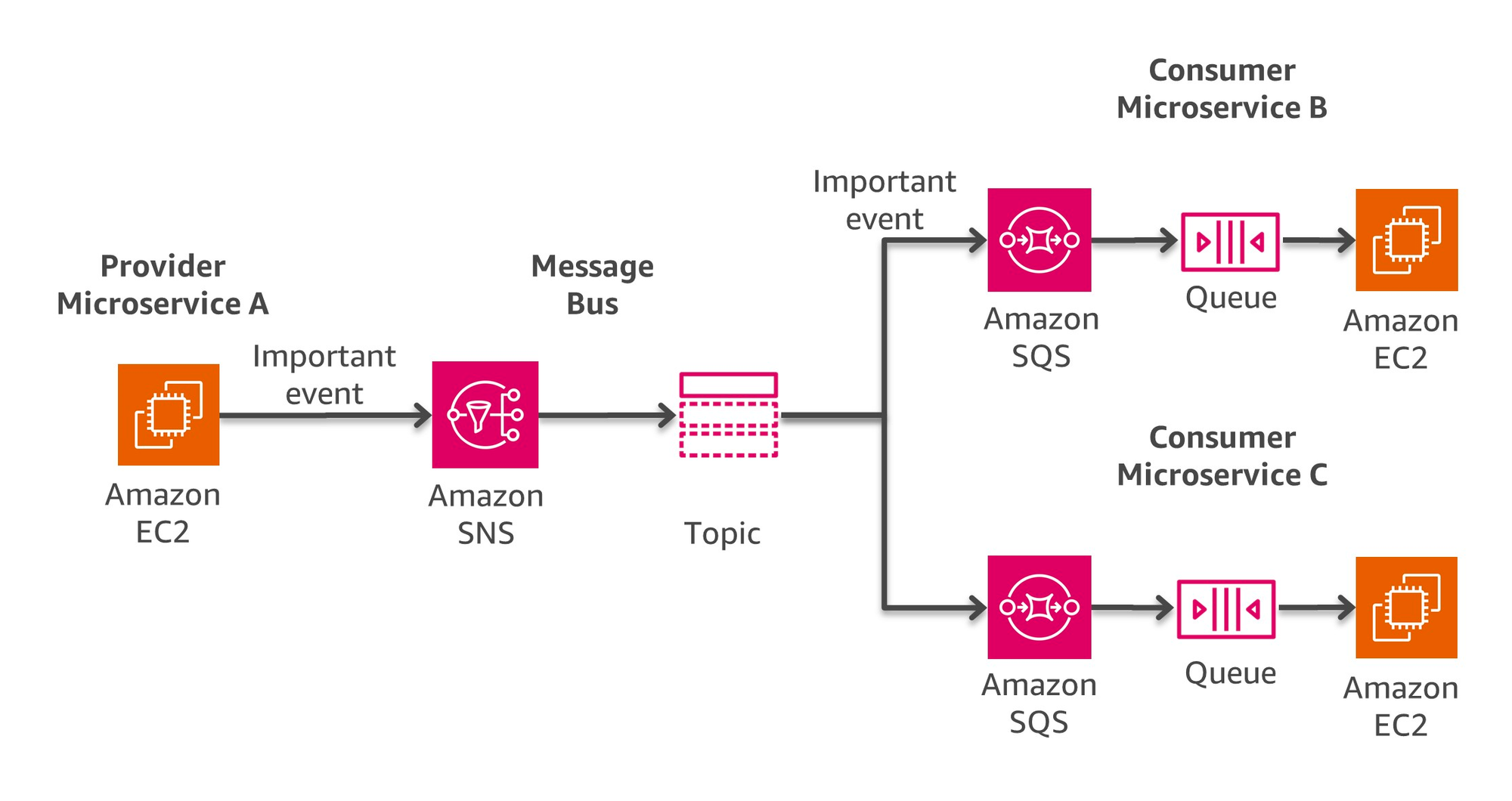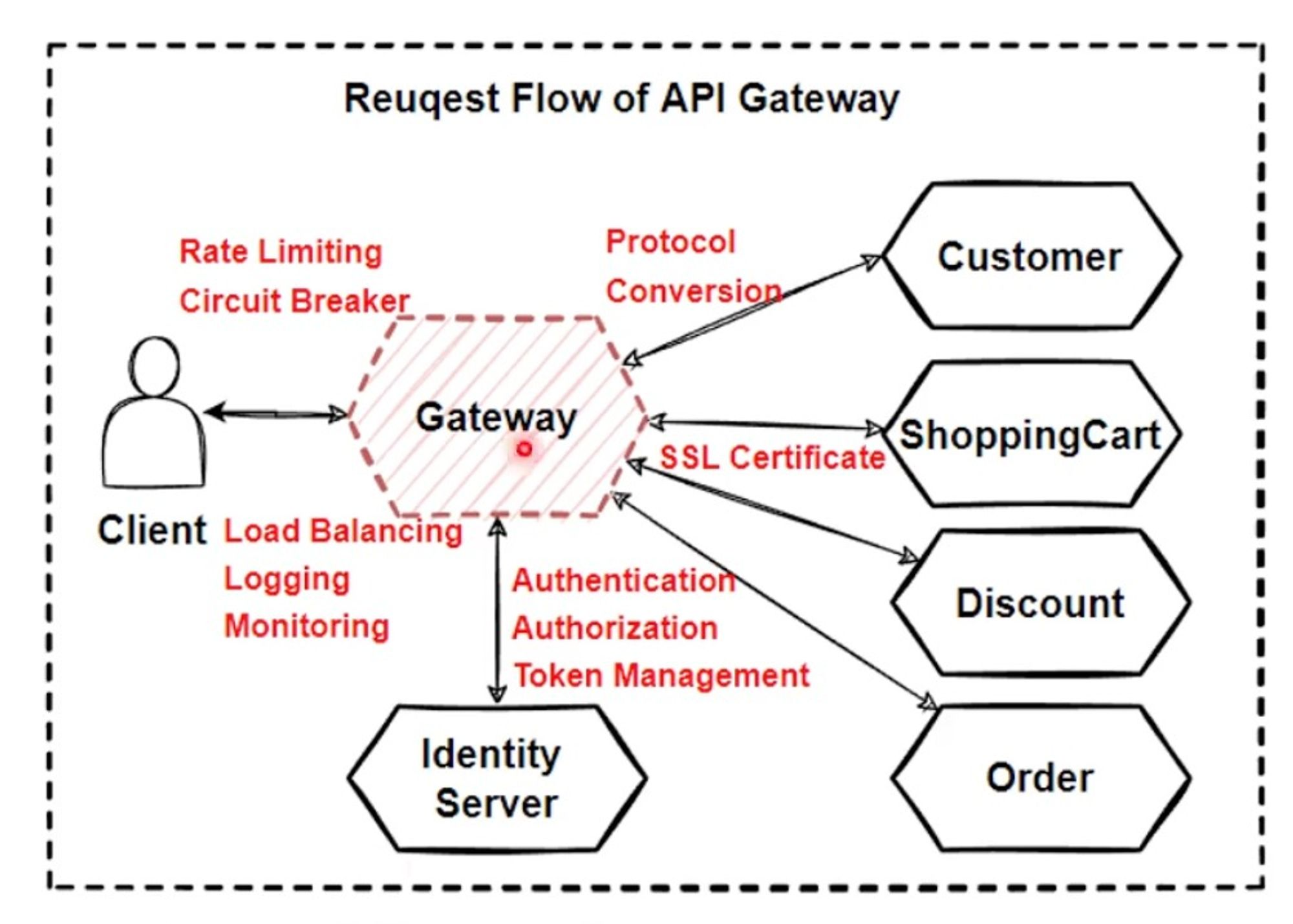Service Call Chain in Microservices
Sync Communication
- send request and wait for response
- http, gRPC, graphql
Async Communication
- send request and won’t wait for response
- one to one: using queue (RabbitMQ)
- one to many: using topic (kafka)
Communication Styles
- request-response: http, gRPC, graphQL (REST)
- push: websocket (chat app)
- pull: http (waste of bandwidth, don’t scale well)
- event: (decoupled, each side doesn’t know each other, complex)
Avoid Service to Service Chain Call
- try to avoid internal service call chain as much as possible
- internal calls make service tightly coupled ,if one failed, all failed → not fault tolerant
- internal calls make the request delayed, lower scalability, availbality and performance
Solution A: API Gateway Aggregation Pattern
- suitbale for short-time predictable request-response.

Solution B: Make chain calls as async
- suitable for long-time unpredictable request.

API Gateway Pattern
- client needs to make calls to multiple services. (data-per-service pattern)
- cross-cutting concerns: auth, rate limiting, ssl, logging, monitoring, circut breaker
- protocol difference: gatewate connect services with gRPC, but http with client
- events: frontend cannot publish events
- flexible payload structure: api gatewat could utilize graphql
Gateway Routing Pattern
- single entry to route request to correct backend services (e.g. Apollo Gateway)
- and if service scaled in $Z$ axis, routing can do sharding for request
Gateway Aggregation Pattern
- merge multiple requests to different backend serice into one request to gateway
Service Registry and Service Discovery Pattern
- How API Gateway know the address of each services
- each service needs to register it’s location in Service Registry
- and API Gateway could use Service Discovery to find the location of each service
Gatewat Offload Pattern
- implement cross-cutting concerns like auth, rate limiting, SSL, Logging, Monitoring, Load Balancing just in gateway, not in every service
Single Point of Failure of API Gateway
- serveral clients connects to a single API gateway might have single point of failure.
- complex client applications will increase the complexity of API gateway which is an anti-pattern
- Solution: spliting single API gateway into several small APIs → Backend for Frontend Pattern
- Insights: Single Point of Failure → splitting into smaller pieces

Backend for Frontend Pattern
- seperate API Gateway into smaller BFF which avoids the single point of failure
Async Communication
- eventual-consistency must be acceptable
Challenges:
- message broker: single point of failure
- it’s difficult to debugging.
- At-Least-Once message delivery and message order is not guaranteed
Types:
- one-to-one: queue-based communication
- one-to-many: topic-based communication
One-to-One Queue-based communication
- 1 Producer, 1 Queue, 1 Consumer
- Producer will send Command to Message Broker (Command Pattern)
One-to-Many Queue-based Communication
- 1 Publisher , M Topcis and M Subscribers
- Relates to Event-Driven Architecture Pattern
Dependency Inversion Pattern (2 → 3 (decoupled)
- A depends on B → A depends on abstract C and B depends on abstract C
- queue or topic are the abstract interface in async communication
Message Persistence Buffer
- No matter it’s 1-1 or 1-M asyn communication, we usually use queue to buffer messages (event with deadletter queue for debugging)
Database is oftern the bottleneck of performance
https://medium.com/@nishantparmar/distribute-data-replication-partitioning-and-sharding-920a71481c1c
- seperate read and write and provides more read replicas
- sharding (horizontal splitting): split big database into smaller one by sharding key, it indirectly adds computing resources horizontally.
